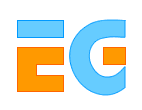Graphics meets Games Talks
The following industrial talks will be presented by the authors on Wednesday through Friday (6-8 Sept).
GG1Graphics meets Games 1
| Date: | Wednesday, 6th September |
| Time: | 14:35-16:10 |
| Location: | Lecture Room 4 |
| Session Chair: | Ralf Habel |

Abstract
COLLADA is a royalty free standard 3D asset exchange format. Fostered by Sony Computer Entertainment to raise the quality of content and tools for consoles such as the PLAYSTATION 3 console, it is now an industry standard in the Khronos Group, also home of OpenGL, OpenGL ES. COLLADA has made quite a journey in its 3 years of existence. It is supported by all major DCC tools (3dsMax, Maya, XSI, Blender, ..) both in export and import, and used by many game developers on all platforms. It is used as intermediate format by many game engines, such as Unreal Engine, C4 Engine, OGRE, and has advanced features such as shader FX and Physics, supported by specialized tools and libraries (FXComposer 2.0, AGEIA PhysX, Bullet,..), that are essential to nowadays content, but unfortunately not available in any other standard exchange format. This talk will provide all the information needed to take advantage of this technology, and provide some insights on its usage on the PS3.

Speaker's Bio
Remi joined the US R&D department at Sony Computer Entertainment as Graphics Architect in 2003, where he designs PS3 graphics API and tools, such as PSGL and COLLADA. Rmi has a long experience in API and tools for real-time graphics, since he obtained his PhD in 'Real-Time image Synthesis' in 1994 while he was working in the R&D department of Thomson Training & Simulation designing Space Magic, a visual systems for civil and military applications. He moved to the USA in 1996 and worked for Silicon Graphics, working high-end features to IRIS Performer, a multi processor optimized scene graph. He then decided to be more adventurous and co-founded Intrinsic Graphics and co-designed the Alchemy cross-platform game engine, which is now owned by Activision.
GG2Graphics meets Games 2
| Date: | Wednesday, 6th September |
| Time: | 16:30-18:00 |
| Location: | Lecture Room 4 |
| Session Chair: | Markus Hadwiger |
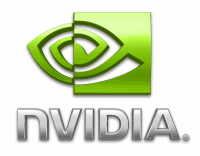
Abstract
High-quality off-line rendering can be accelerated with standard graphics hardware by using the hardware in somewhat non-standard ways. Since visibility must be sampled at high rates in space and time, shading is sampled in parameter space rather than screen space. To support displacement efficiently, bounding box visibility queries are intermixed with rendering. Transparency uses depth peeling. The resulting modified Reyes algorithm is implemented in the NVIDIA Gelato renderer.
Even so, film frames take minutes or hours, while game frames render at over 30 Hz. However, the first frame of a game takes much longer. The problem is that every film frame is a first frame. Accelerated relighting is one solution we have implemented.
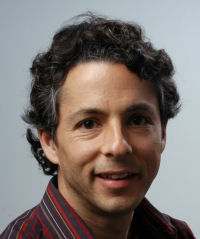
Speaker's Bio
Eric Enderton has been a leader in rendering and animation software for visual effects since 1990, when he joined Industrial Light & Magic as their first full-time computer graphics software engineer. His projects there included the original NURBS stitching program for Terminator 2 and ILM's first GUI lighting software for Jurassic Park. He also founded and managed ILM's production engineering group. Eric went on to consult at several major film studios before joining NVIDIA in 2003, where he is a principal software engineer on Gelato, the first GPU-accelerated final frame renderer. Eric has degrees in computer science from the University of California at Berkeley.
Abstract
This presentation is intended to be an overview of the PS3 hardware architecture with a focus on the graphics pipeline as well as an introduction to the related software APIs and tools.
Speaker's Bio
Started in the game industry in a small French game studio 6 years ago. moved to United States to work at Intrinsic Graphics. joined Sony Computer Entertainment to create the audio and media engines of the PSX in 2003. In 2005 joined Emdigo as Lead Engineer. Emdigo is a newly created startup focusing on 3D graphics content on cellphones. In 2006, came back to Sony computer entertainment to work on Cg for the PS3 launch.
GG3Game Architectures
| Date: | Thursday, 7th September |
| Time: | 15:30-17:00 |
| Location: | Lecture Room 4 |
| Session Chair: | Michael Wimmer |
Abstract
Direct3D10 is the most recent evolution of graphics hardware/API and includes significant changes. This talk will discuss the latest version of the shading model (4.0), new pipeline stages like the geometry shader and other changes to pipeline and API that have occurred. It will also cover some of the techniques that leverage these features and ship in the DirectX SDK: GPU Accelerated sparse morph targets, particle systems and procedural geometry.
Speaker's Bio

Peter-Pike Sloan has been in the DirectX group at Microsoft for the past four years. Prior to that he was a member of the graphics group in Microsoft Research, a staff member at the Scientific Computing and Imaging group at the University of Utah and worked at both Evans and Sutherland and Parametric Technologies. He is interested in most aspects of computer graphics and most of his publications are available online.

Abstract
The talk addresses current rendering techniques used in games, and future trends in this area. Furthermore, different techniques used for facing the increasing complexity of game technology are discussed, for example different approaches of efficient graphical tool pipelines, feature assembling techniques, modularization, and software architectures. A second aspect of the talk is the usage of such techniques in other areas of computer graphics, such as broadcasting and digital film. The experiences at Spinor on the value, advantages and disadvantages of the different techniques in such areas are presented.
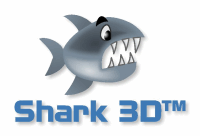
Speaker's Bio
Folker Schamel heads the development of the Shark 3D middleware platform for consoles and computer games, broadcasting, simulation and other high quality interactive realtime 3d applications. A mathematical physicist by training, Folker has a decade of experience in realtime 3d development for the computer and console games industry.
As Spinor's representative of the OpenGL specification consortium ARB, Folker takes actively part in the work on the specification of OpenGL.
GG4Academia meets Industry
| Date: | Friday, 8th September |
| Time: | 11:00-12:30 |
| Location: | Lecture Room 4 |
| Session Chair: | Timo Aila |

Abstract
Physically based simulation has been an active research field in computer graphics for the last twenty years. In early years, real time simulation was not possible due to the lack of computing power. Still today, most methods presented at conferences target offline use. The main reason being the possibility of producing more realistic and visually compelling results - typically used for special effects in movies - even though interactive applications, especially computer games represent a far greater market than the movie industry.
Making physical simulation methods suitable for the use in movies is challenging. However, it is even more challenging to make these methods work in games. A game typically runs at 40-60 fps and physical simulations only get a fraction of the 20 milliseconds per time step. In addition, the simulation must be stable even in unphysical environments and it must consume as little memory as possible.
There is already a substantial body of work concerning offline simulations. In contrast, interactive physics is still an open research field. While the visual quality might not be as compelling, interactivity brings a completely new dimension to simulation. We would like to encourage researchers to advance into this new and exciting direction.
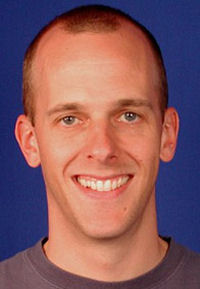
Speaker's Bio
Matthias Müller-Fischer received his Ph.D. on atomistic simulation of dense polymer systems in 1999 from ETH Zurich and changed fields to macroscopic physically-based simulations during his post-doc 1999-2001 with the MIT Computer Graphics Group.
In 2002 he co-founded NovodeX, now a subsidiary of AGEIA Inc., the company developing the world's first Physics Processing Unit (PPU) for games. He currently works for AGEIA as a principal software engineer responsible for the development of hardware accelerated simulation software for real-time effects such as fluids, cloth and rigid body animation.
Moderator's Bio

Tobias Sicheritz studied Computer Science at the Technical University of Vienna, Austria. After two years of developer support for IBM and smaller freelance games jobs he started working for Reality 2, a VR and LBE company that was based in Innsbruck in 1997. In 2000 he joined neo Software GmbH in Vienna which turned into Rockstar Vienna in 2003. During his 6 years in the company, he held the positions of Lead Programmer, Head of Game Development and Technical Director. He is now partner in and Technical Director of ML Enterprises, an entertainment industry production and licensing agency based in Munich, Germany.























